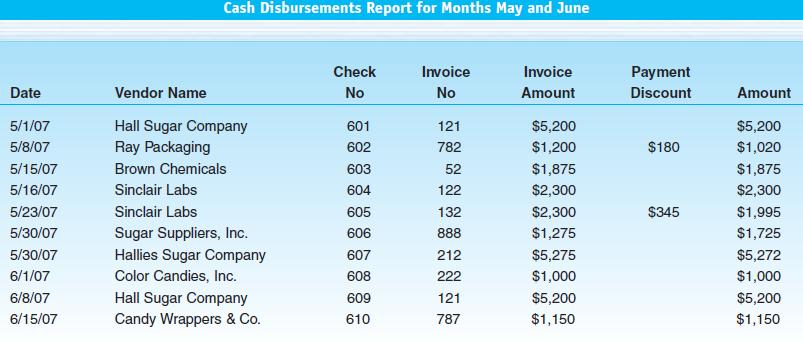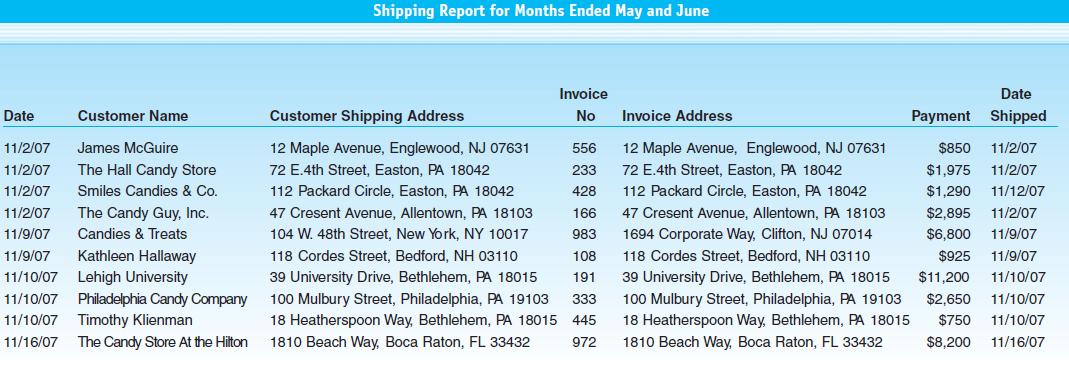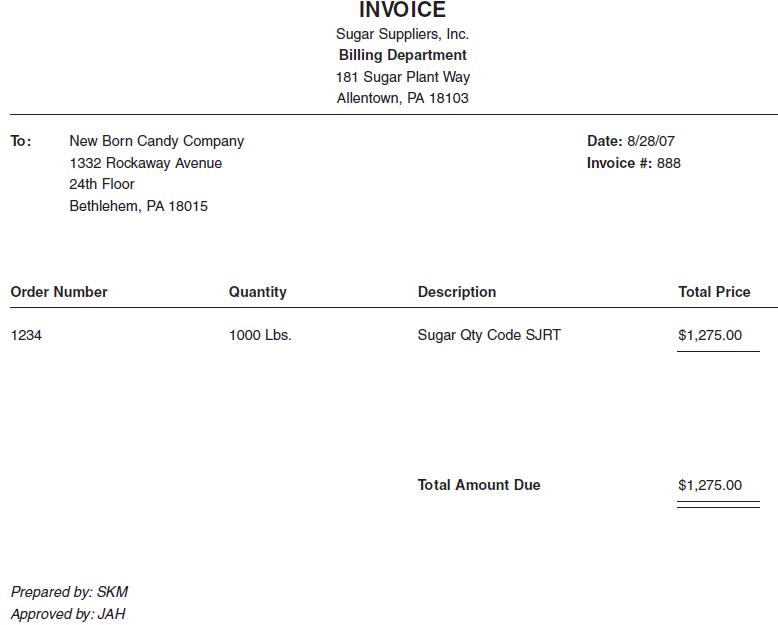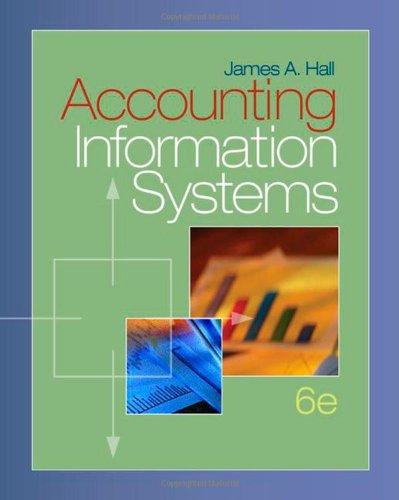New Born Candy Company (Prepared by Gaurav Mirchandani and Matthew Demko, Lehigh University) New Born Candy Company
Question:
New Born Candy Company
(Prepared by Gaurav Mirchandani and Matthew Demko, Lehigh University)
New Born Candy Company is the premier manufacturer and marketer of one of the bestselling candies today. The company manufactures and markets a variety of sugar-intense candies. James Born, the current CEO of New Born Candy Company, took control of the family-run business in the 1970s, although New Born Candy Company has been in existence since the mid-1930s. The company has grown to two plants on the East Coast and 209 employees across the country.
As of the fiscal year ended 2007, New Born Candy Company experienced gross sales of almost $100 million. A major contributor was its line of Leeps and Mike and Wike candies, among the two most popular sugar candies today. Compared to its competitors, New Born Candy Company performs well.
In spite of its relative success, the CEO and management team are concerned about recent increases in costs. For example, the rate of increase in cost of goods sold has been disproportionate with growth in sales.
Additionally, they are concerned that if they do not implement essential changes and upgrades to their technology platform, they will no longer be able to compete with larger manufacturers. Changes in the environment have drastically affected their production and ability to manufacture and market to larger customers such as Walgreens and CVS, big revenue-producers for the candy company.
 As a result, James Born and his management team have decided to hire GMD Consulting Group to examine and identify current weaknesses in accounting and operations and to make suggestions for changes in the future.
As a result, James Born and his management team have decided to hire GMD Consulting Group to examine and identify current weaknesses in accounting and operations and to make suggestions for changes in the future.
The following describes the relevant business cycles for GMD to review.
Revenue Cycle Description New Born Candy Company receives orders from one of two places: They are delivered to the mail room where they are received and sorted, or the sales personnel receive them directly. After the mail is received and sorted by the mail room, sales orders are passed to the sales personnel. GMD Consulting looked further into mail room procedures and operations and made some interesting findings.
 Jonathan, the supervisor of the mail room, explained to GMD Consulting that there are so many orders (due to the rapid growth of the business and the 6,000+ customers) that they have trouble sorting through all of the mail and getting it to the appropriate department.
Jonathan, the supervisor of the mail room, explained to GMD Consulting that there are so many orders (due to the rapid growth of the business and the 6,000+ customers) that they have trouble sorting through all of the mail and getting it to the appropriate department.
Jonathan explained that people in the mail room have been working considerable overtime to process the mail, but they still frequently fall behind. In talking with Suzanne, a veteran salesperson for New Born Candy Company, it was discovered that sales orders often take several days to get from the mail room to the sales department. She also told GMD Consulting that during busy times, it is very difficult to process all of the daily orders.

 After receiving the orders, the sales personnelperform a credit check. When completed, the credit copy is filed along with the customer order. The billing copy is sent to the computer department, and the stock release, packing slip, shipping notice, and file copy are sent to the warehouse. Here the goods are picked and sent to shipping along with a copy of the stock release. Shipping then takes the file copy, shipping notice, packing slip, and stock release and reconciles the goods and documents, signs the shipping notice, and prepares the bill of lading. The prepared bill of lading, along with a packing slip, is given to the carrier. The carrier then ships the goods to the customer. Additionally, a file copy, a copy of the stock release, and a copy of the bill of lading are placed in a shipping file. It is important to note that in examining the shipping department, it was found that they have been receiving an increasing number of complaints from customers. Some key documents (found on pages 282–285) shed some light on this issue.
After receiving the orders, the sales personnelperform a credit check. When completed, the credit copy is filed along with the customer order. The billing copy is sent to the computer department, and the stock release, packing slip, shipping notice, and file copy are sent to the warehouse. Here the goods are picked and sent to shipping along with a copy of the stock release. Shipping then takes the file copy, shipping notice, packing slip, and stock release and reconciles the goods and documents, signs the shipping notice, and prepares the bill of lading. The prepared bill of lading, along with a packing slip, is given to the carrier. The carrier then ships the goods to the customer. Additionally, a file copy, a copy of the stock release, and a copy of the bill of lading are placed in a shipping file. It is important to note that in examining the shipping department, it was found that they have been receiving an increasing number of complaints from customers. Some key documents (found on pages 282–285) shed some light on this issue.
The billing copy that was generated by the sales department is now in the computer department. Here via a keystroke operation, sales data are entered into the sales order file.
Then an edit run is performed. After the edit run, the data are posted to the sales journal, accounts receivable file, general ledger file, and inventory file. A management report is then created, and the customer invoice is printed and sent to the customer.
Expenditure Cycle Description Twice each week, New Born Candy Company’s computer department reviews the inventory computer file. From this review a requisition list is created and sent to the purchasing department, where it is converted into a purchase order (PO). Two POs are sent to the vendor, and one is filed in the department.
After the POs are prepared, the requisition list is filed. Upon further review of purchases and inventory control, Sammy, the manager of the manufacturing department, said that they occasionally run out of certain raw materials. As a result they do not always produce to capacity.
When the vendor receives the order from purchasing, it ships the goods along with a copy of New Born’s original PO and a formal packing slip to the receiving department.
There the PO and packing slip are used to assist the receiving clerk in preparing a receiving report. After the receiving report is prepared, the PO and packing slip are filed in the department. One copy of the receiving report is sent to the purchasing department, where it is filed, and another copy is sent to AP, where it is filed until the vendor’s invoice arrives.
When AP receives the vendor’s invoice, the AP clerk matches it to the filed copy of the receiving report. The clerk then prepares a cash disbursement voucher to authorize payment.
The disbursement voucher is sent to the computer department, where it is used in a keystroke operation to create an AP record.
The AP clerk then prepares a hard copy journal voucher that is sent to the general ledger department and is used to update the general ledger computer file from a terminal in the GL department. The journal voucher is filed in the GL department Required:
a. Create data flow diagrams of the revenue and expenditure procedures.
b. Create system flowcharts of the current revenue and expenditure procedures.
c. Analyze the internal control and operational weaknesses in the system.
d. Prepare system flowcharts of a redesigned system that resolves the control and operational weaknesses you have identified.
Step by Step Answer:






